The 2016 elections of Tsai Ing-wen of the Democratic Progressive Party (DPP) in Taiwan, and of Donald J. Trump in the United States have injected new uncertainty in the security environment across the Taiwan Strait. Meanwhile, an increasingly self-assured Beijing, aided by political developments in China encouraging assertiveness, is creating new tensions in the region, which will create new challenges for Washington and Taipei.
PARTNERS STILL
The DPP’s return to power in the January 2016 elections, in which the Taiwan-centric party won a majority in the Legislative Yuan for the first time in the country’s history, signaled an end to the previous eight years of Kuomintang (KMT) rule. Former KMT President Ma Ying-jeou had staked his legacy on efforts to improve ties with the People’s Republic of China (PRC). Washington proved amenable to, and in some instances encouraged, the unprecedented rapprochement that occurred between the two ideological enemies between 2008-16. The reduction in tensions, however, was only little more than a hiatus from previous policies, and the process did not address the underlying causes of the tensions across the Taiwan Strait. By March 2014, protestors occupied the Legislative Yuan for 23 days over a controversial services trade agreement with China. This event, now known as the Sunflower Movement, derailed President Ma’s plans and struck a major blow to Beijing’s efforts to achieve its political aim (unification) through economic incentives.
The DPP’s fortunes in the elections were a direct result of an attitudinal shift in the Taiwan polity, with a public that had become more wary of Beijing’s intentions. Increased contact with Chinese people as well as developments in Hong Kong and China, where an intensifying assault on civil society, lawyers, and the media, and tightening of internet controls fostered deep apprehensions about the effects of Chinese influence.
Reflecting those attitudes, President Tsai has adopted a more cautious approach to China, drawing limits on how far she was willing to go on “one China” and the so-called “1992 consensus,” which Beijing had set as a precondition for dialogue across the Taiwan Strait. Despite attempts by Taipei to reach an understanding with China, and President Tsai’s commitment to maintaining the status quo in the Taiwan Strait, Beijing has shown intransigence in its response and used Taipei’s refusal to acknowledge the 1992 consensus as a justification for ramping up political and military pressure against the island nation.
During this period, Taiwan’s relations with the United States have remained steady, and President Tsai’s cautious yet firm cross-Strait policy has survived both the outgoing Obama administration and the new government under President Trump. Despite campaign promises by Trump to be tough on China and a precedent-setting telephone conversation between then President-elect Trump and President Tsai on December 2, 2016,1 followed by an apparent U-turn at the White House at the Mar-a-Lago summit in April,2 U.S.-Taiwan ties have been solid. While the lack of appointments to key positions at the Department of State has resulted in occasional communication issues between Taipei and Washington, bilateral exchanges and, more importantly for this paper, the security relationship, have been characterized mostly by continuity.
The June 2017 release of a $1.4 billion arms package to Taiwan dispelled apprehensions that the foreign military sales (FMS) process had fallen prey to the closer ties between Beijing and Washington, as the latter convinced itself of China’s ability to resolve the North Korean nuclear missile issue.3 Although the arms package did little to shift the balance of power in the Taiwan Strait and consisted primarily of items agreed to in principle by the Obama administration, but which failed to be notified to Congress, the release six months into the Trump administration sent a reassuring signal of continued political support for Taiwan. Just as important, remarks by U.S. Secretary of Defense Jim Mattis, at the Shangri-La Dialogue in Singapore the same month, reaffirming U.S. support for Taiwan and using principled language not seen since the Clinton years, also clarified that the Department of Defense remains firmly committed to security exchanges and regards Taiwan as an important partner in an increasingly volatile part of the world.4
The U.S. Congress, meanwhile, continues to be a strong base of support for Taiwan, as exemplified by the recent introduction by Senator Tom Cotton (R-Ark.) and Senator Cory Gardner (R-Colo.) of the Taiwan Security Act (TSA). The bill aims to enhance U.S.-Taiwan relations across the board and a provision adopted in the National Defense Authorization Act for 2018 seeks to re-establish “regular ports of call by the U.S. Navy at Kaohsiung [Tsuoying] or any other suitable ports in Taiwan.”5
As long as President Tsai maintains her careful approach to the trilateral relationship and refrains from engaging in policies that risk instilling fear in Washington—such as moves toward a declaration of de jure independence—relations between Taipei and Washington are expected to remain constructive. Barring a major break with long-standing policy, the Trump administration will therefore have little incentive to revise how it approaches Taipei and Beijing.
THE CHANGING SECURITY ENVIRONMENT
Despite stable ties between Taiwan and the United States, China has continued apace with its plans to shift the balance of power in the Taiwan Strait and the region, ostensibly with the objective of displacing Washington as the regional power in the Asia-Pacific. Years of double-digit growth in defense expenditure, along with a modernizing industrial base and acquisitions of cutting-edge defense technology from Russia, have given the People’s Liberation Army (PLA) a net advantage over Taiwan’s armed forces. Notably, the PLA has grown its ability to conduct joint operations and to fight “short-duration, high-intensity regional conflicts at greater distances from the Chinese mainland.”6 In the past decade, Beijing has placed greater focus on implementing an anti-access/area-denial (A2/AD) strategy to prevent, and failing that, to delay U.S. involvement in a Taiwan Strait contingency. These developments have also added challenges to Taiwan’s defense posture while reinforcing China’s propagandistic signals to Taiwanese society that resistance is futile and Chinese victory is inevitable. In recent years, the PLA Navy (PLAN) has increased transits north of Taiwan through the Miyako Strait and south through the Bashi Channel on its way to exercises in the West Pacific. The Liaoning aircraft carrier has traveled through the Taiwan Strait, and the PLA Air Force (PLAAF) has occasionally intruded into Taiwan’s air defense identification zone (ADIZ). These activities highlight Taiwan’s vulnerability and isolation, while creating new facts in the air and at sea, and also allow the Chinese military to familiarize itself with the immediate environment surrounding Taiwan.
Notwithstanding the resulting sense of crisis, it is far from certain that decisionmakers in Beijing and within the PLA are confident they could successfully initiate a major military operation against Taiwan that, if it were to seize control of the island, would necessitate a hugely challenging amphibious assault.7 Other military scenarios, such as limited coercive or decapitation strikes by the PLA’s Army Rocket Force (formerly the Second Artillery Corps), have unknown chances of success due to improvements by Taiwan in recent years (with strong assistance from the U.S.) in its ability to track and intercept ballistic missiles, as well as hardening of key targets.
The intensifying military threat targeting Taiwan must also be regarded as part of a larger trend in PLA activity, which is a drive to break out of the “first island chain” and consolidate the presence of the Chinese military in the wider Asia Pacific. Therefore, while frequent passages near Taiwan may be construed as a threat to the island nation, they are nonetheless inevitable as the PLA expands its operations to cover the East and South China Seas, large swaths of which it claims as part of its territory. Taiwan is a victim of its geography; it stands in the way of what China regards as the natural path to its outward expansion. Still, the growing frequency of PLA activity near Taiwan undeniably serves to reinforce Beijing’s propaganda, foster uncertainty in Taiwan, and convince Taiwan’s security partners—the United States and Japan chief among them—of the futility of engaging PLA forces in a cross-Strait conflict scenario.8 Those also dovetail with Beijing’s signals to, and pressure on, the Tsai administration.
It is nevertheless clear by now that Taiwan faces the prospect of having to defend itself alone against a sustained military campaign from China for several days, if not weeks, before the U.S. military can come to its assistance, should Washington decide to do so. To exacerbate the uncertainty caused by China’s A2/AD capabilities, Beijing has also intensified its political warfare and propaganda campaigns aimed at encouraging the abandonment of U.S. security assistance to Taiwan. Besides directly targeting and co-opting retired officials and academics in Taiwan and elsewhere, China has also relied upon disinformation aimed at presenting Taiwan’s military as inept, unprepared, and unwilling to defend the island. Opinion polls purportedly showing that Taiwan’s population is apathetic and has little desire to do what is necessary to defend itself have inadvertently played into this narrative by framing the question in ways that encourage negative responses—often by failing to suggest a scenario in which China is not provoked and yet launches military operations against Taiwan.
The threatening posture against Taiwan should also be understood as a mix of domestic and systemic pressures in China rather than a strictly top-down rational decisionmaking process.9 While President Xi Jinping has accumulated powers unprecedented since Mao Zedong, his ability to control the full Chinese political system remains limited and often undermined by institutional and factional competition. Thus, while President Xi clearly sets the tone for China’s overall policy, some decisions can be made at lower levels or opponent factions can act within the Chinese Communist Party (CCP) to increase tensions and compel President Xi to take action. Those systemic incentives are especially salient in the lead-up to the 19th party congress, which will be held in the fall of 2017, during which any sign of weakness on China’s “core issues”—including Taiwan—can be construed as lack of ideological rigor and therefore a career ender. Institutional competition for resources within the PLA and the security apparatus can also compound decisions that increase tensions with Taiwan, as seen by the March 2017 kidnapping of Taiwan human rights activist Lee Ming-che. In such instances, a strong response from the Taiwan side could quickly exacerbate the situation and lead to conflict escalation. Thus far, the Tsai administration has refrained from engaging in such retaliation and has thereby denied hardliners in the CCP and the PLA the ammunition they need to pressure President Xi into adopting a more belligerent stance against Taiwan, which, official rhetoric notwithstanding, is not Beijing’s top priority at the moment.10 Nevertheless, there is a real danger that President Xi has created a commitment trap for himself. Having adopted a tough stance on Taiwan to placate domestic political pressure, those same pressures could later impel him to act against Taiwan.
Besides the military threat, there is evidence suggesting that China has intensified its political warfare operations in and against Taiwan. Frustrated with its inability to obtain its objectives via traditional channels, Beijing has initiated a campaign of co-option and economic incentives that bypasses government institutions altogether. Additionally, using fifth-column elements in Taiwan—academics, civil society, triad members, and front organizations—and computational propaganda, Beijing has sought to erode public trust in Taiwan’s democratic institutions, sow discord, and thereby undermine the Tsai administration.11 A government undermined by declining popular support and dysfunctional policy implementation as a result of a concerted campaign by pro-Beijing elements could undermine Taiwan’s image in Washington and with the American public. This, in turn, could negatively impact the U.S.-Taiwan security relationship.
MOVING FORWARD
At this point it is difficult to predict the composition and future behavior of the CCP after the 19th party congress. Still, while Taiwan and the purported aim of defending China’s territorial integrity will remain on Beijing’s list of “core interests,” the amount of pressure, both military and political, that is brought to bear on Taipei will be contingent on a variety of other scenarios that have preoccupied China in recent months, including the South and East China Seas, Hong Kong, Tibet, Xinjiang, and uncertainty in the Korean Peninsula. Barring an unlikely policy shift in Taipei, most if not all of these crises, added to instability in other parts of China, are more likely to endanger China’s national interests and compel the authorities in Beijing to focus their energies on addressing those. Nevertheless, and accounting for other temporary contingencies, there is no doubt that Taiwan will remain in Beijing’s crosshairs, and as such, it is essential that Taiwan’s relationship with Washington continues to flourish at all levels. This will be primordial to ensure the continuation of the “status quo” in the Taiwan Strait amid efforts by China to irreparably alter the balance. Among other things, Taipei will have to redouble its efforts to convince its American ally that it is committed to its own defense and worth defending. To this end, Taiwan should invigorate a counter-propaganda campaign aimed at debunking China’s narrative of historical inevitability while better explaining to ordinary Americans why Taiwan matters.
To facilitate Taiwan’s outreach to the United States, the Tsai administration will need to ensure the government appropriates a minimum 3 percent of GDP for national defense, long seen as a psychological, if symbolic, benchmark among American policymakers. Resolving recruitment problems amid efforts to create an all-volunteer military, and ensuring a properly trained reserve force, would go a long way in demonstrating to the United States that Taiwan understands the nature and extent of the threat it faces and that it is committed to defending itself against external aggression.
While Taiwan now prioritizes the indigenous development of weapons platforms, foreign military sales will remain an important signal of continued U.S. support for Taiwan under the Taiwan Relations Act (TRA) and should therefore continue. However, making arms sales more regular would ensure timelier delivery of necessary defensive articles for Taiwan in a way that better reflects the rapidly evolving security situation in the Taiwan Strait. Although Taiwan recently announced it intends to submit a letter of request for the Lockheed Martin F-35 aircraft,12 the prospects that such a sale will go through are dim. Nevertheless, a U.S. refusal should be worded in a way that mitigates the political effects in Taiwan and that also avoids sending the unintentional signal that Washington is abandoning its long-standing partner. Therefore, an F-35 denial should be accompanied by an alternative, high-value military article that bolsters Taiwan’s defenses (some analysts argue that the THAAD missile defense system, recently deployed in South Korea, should be made available to Taiwan).
Taipei and Washington should exert a greater effort to explore potential cooperation in the development and production of various military articles, which could prove beneficial to both countries. Existing limits on the export of American technologies to Taiwan, while logical from the non-proliferation perspective (e.g., the missile technology control regime), should nevertheless be reassessed in light of China’s constant flouting of such international agreements and its continued procurement of highly advanced military technology from Russia. Revisions would be particularly helpful in areas that help bolster Taiwan’s counterforce capabilities. U.S. support—direct, or by “green-lighting” third-party cooperation—will also be crucial for the successful completion of Taiwan’s indigenous defense submarine program.
Finally, some analysts have begun questioning the “strategic ambiguity” that has long characterized Washington’s position in the Taiwan Strait equation. The belief in China that the United States does not intend to or no longer has the ability to intervene on Taiwan’s side could invite adventurism by fueling the fear that Taiwan can indeed be seized by force at minimal cost.13 More concise signaling by Washington, along with a better defined role for Japan in such a contingency, would immediately bolster Taiwan’s deterrent. Given the changing dynamics in the Asia region and the high likelihood that the United States can no longer unilaterally maintain the status quo amid pressures from revisionist China, Washington should also encourage like-minded states in the region, from Japan to India, to increase their cooperation with Taiwan on security and intelligence-sharing.
-
Footnotes
- Mark Landler and David E. Sanger, “Trump Speaks With Taiwan’s Leader, an Affront to China,” The New York Times, December 2, 2016, https://www.nytimes.com/2016/12/02/us/politics/trump-speaks-with-taiwans-leader-a-possible-affront-to-china.html?mcubz=1.
- David Nakamura, “At Mar-a-Lago, Trump welcomes China’s Xi in first summit,” The Washington Post, April 6, 2017, https://www.washingtonpost.com/politics/at-mar-a-lago-trump-to-welcome-chinas-xi-for-high-stakes-inaugural-summit/2017/04/06/0235cdd0-1ac2-11e7-bcc2-7d1a0973e7b2_story.html?utm_term=.77420cb6f728
- U.S.-Taiwan Business Council, “The Trump Administration Announces U.S. Arms Sales to Taiwan,” press release, June 29, 2017, http://www.us-taiwan.org/pressrelease/2017june29congressionalnotificationsarmssalestotaiwan.pdf.
- “Remarks by Secretary Mattis at Shangri-La Dialogue,” June 3, 2017, https://www.defense.gov/News/Transcripts/Transcript-View/Article/1201780/remarks-by-secretary-mattis-at-shangri-la-dialogue/
- “Cotton and Gardner Introduce Taiwan Security Act,” press release, July 24, 2017, https://www.cotton.senate.gov/?p=press_release&id=758
- DOD Annual Report to Congress: Military and Security Developments Involving the People’s Republic of China 2017.
- Heath, Timothy R., “Why China Will Not Unify with Taiwan by 2020 — and Beijing Lacks Compelling Military Options,” The Rand Blog, March 21, 2017, https://www.rand.org/blog/2017/03/why-china-will-not-unify-with-taiwan-by-2020-and-beijing.html
- See Eric Heginbotham et al, “The U.S.-China Military Scorecard: Forces, Geography, and the Evolving Balance of Power 1996-2017,” Rand Corporation, 2015, https://www.rand.org/content/dam/rand/pubs/research_reports/RR300/RR392/RAND_RR392.pdf
- 「別以為搞定習近平就搞定一切」 徐斯儉:處理對中關係 最好等到十九大結束, remarks by Hsu Szu-chien cited in Storm Media, Aug. 18, 2017, http://www.storm.mg/article/317727
- Cole, J. Michael, “President Tsai Dodges Another Cross-Strait Bullet,” Taiwan Sentinel, April 20, 2017, https://sentinel.tw/president-tsai-dodges-bullet/
- Cole, J. Michael, “Will China’s Disinformation War Destabilize Taiwan?” The National Interest, July 30, 2017, http://nationalinterest.org/feature/will-chinas-disinformation-war-destabilize-taiwan-21708
- Tsao, Nadia and Jonathan Chin, “Taiwan to submit letter of request to US for fighters,” Taipei Times, August 17, 2017, http://www.taipeitimes.com/News/front/archives/2017/08/17/2003676658
- Bosco, Joseph, “Time to End US Strategic Ambiguity on Taiwan,” The Diplomat, June 14, 2017, http://thediplomat.com/2017/06/time-to-end-us-strategic-ambiguity-on-taiwan/
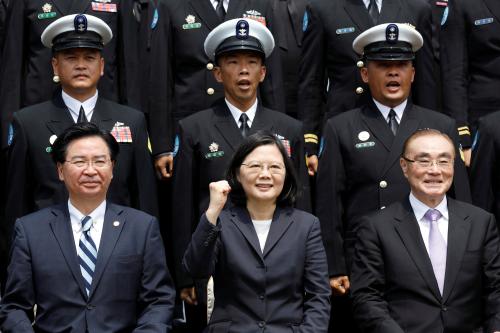
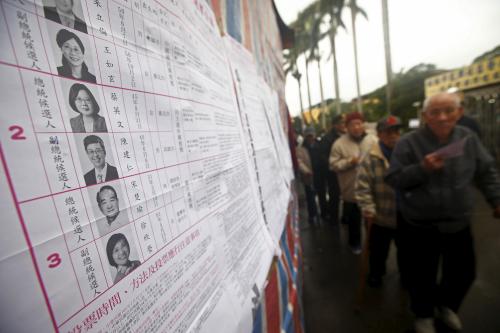
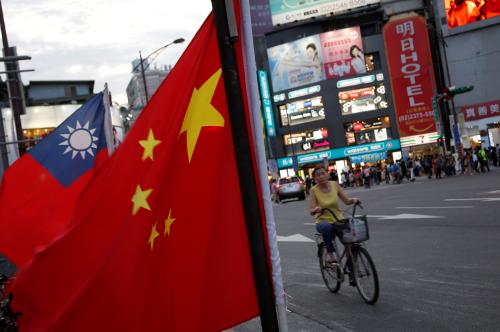
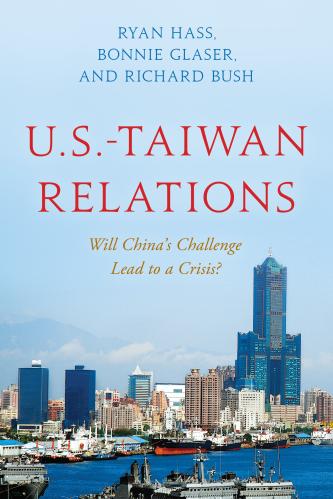
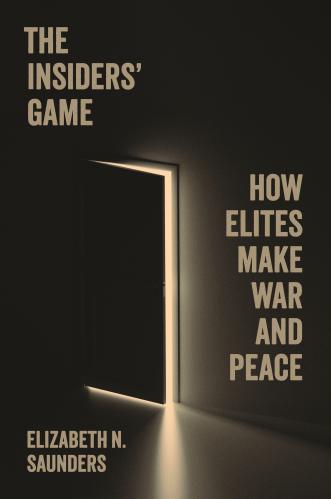



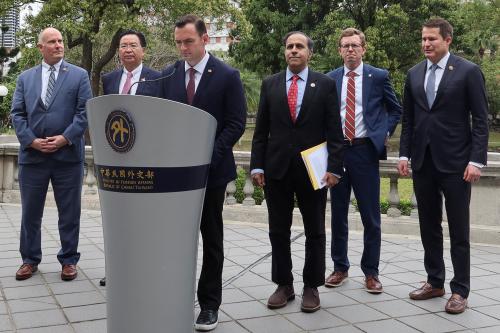
Commentary
Op-edThe U.S.-Taiwan security relationship in a time of transition
September 6, 2017